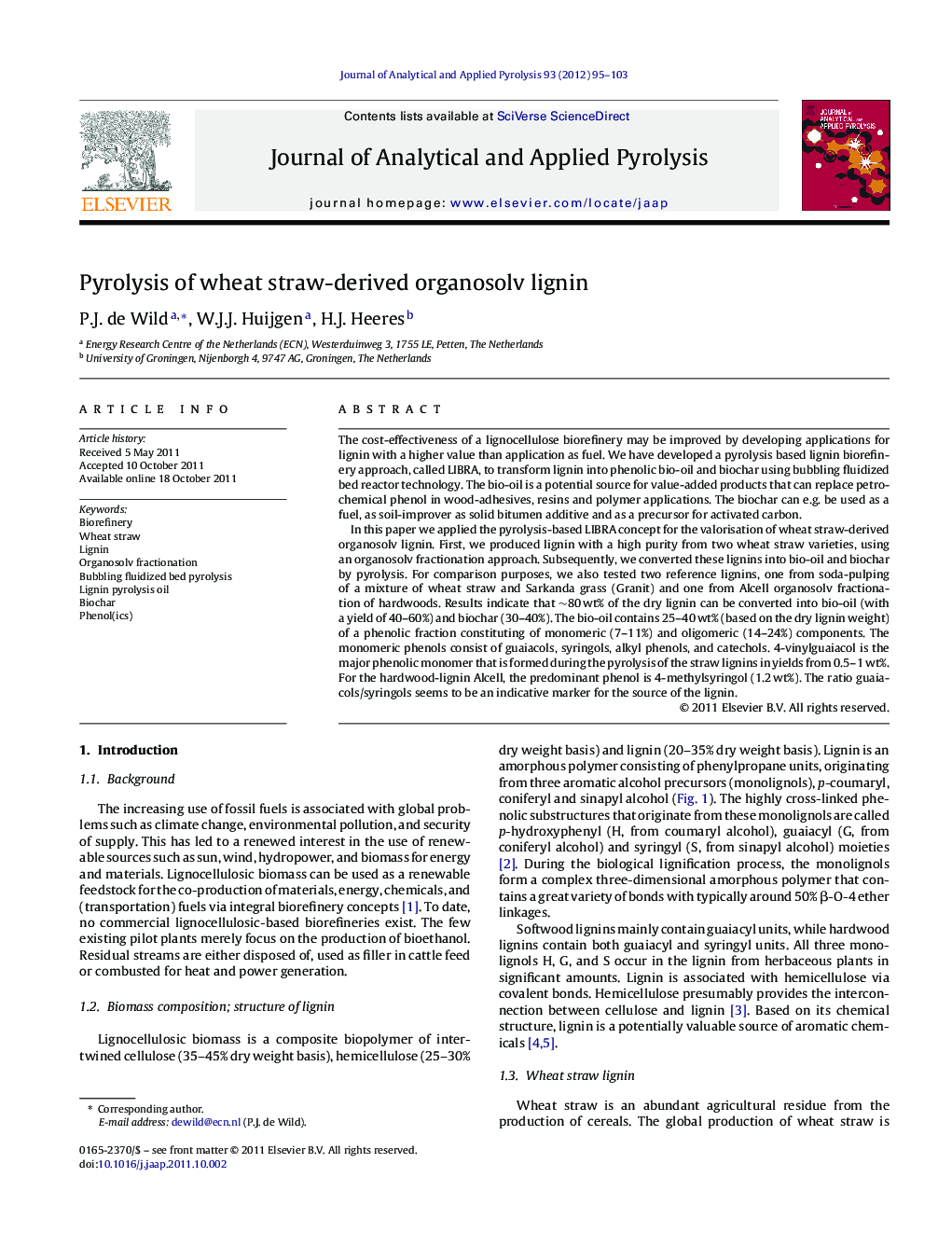| Article ID | Journal | Published Year | Pages | File Type |
|---|---|---|---|---|
| 1197672 | Journal of Analytical and Applied Pyrolysis | 2012 | 9 Pages |
The cost-effectiveness of a lignocellulose biorefinery may be improved by developing applications for lignin with a higher value than application as fuel. We have developed a pyrolysis based lignin biorefinery approach, called LIBRA, to transform lignin into phenolic bio-oil and biochar using bubbling fluidized bed reactor technology. The bio-oil is a potential source for value-added products that can replace petrochemical phenol in wood-adhesives, resins and polymer applications. The biochar can e.g. be used as a fuel, as soil-improver as solid bitumen additive and as a precursor for activated carbon.In this paper we applied the pyrolysis-based LIBRA concept for the valorisation of wheat straw-derived organosolv lignin. First, we produced lignin with a high purity from two wheat straw varieties, using an organosolv fractionation approach. Subsequently, we converted these lignins into bio-oil and biochar by pyrolysis. For comparison purposes, we also tested two reference lignins, one from soda-pulping of a mixture of wheat straw and Sarkanda grass (Granit) and one from Alcell organosolv fractionation of hardwoods. Results indicate that ∼80 wt% of the dry lignin can be converted into bio-oil (with a yield of 40–60%) and biochar (30–40%). The bio-oil contains 25–40 wt% (based on the dry lignin weight) of a phenolic fraction constituting of monomeric (7–11%) and oligomeric (14–24%) components. The monomeric phenols consist of guaiacols, syringols, alkyl phenols, and catechols. 4-vinylguaiacol is the major phenolic monomer that is formed during the pyrolysis of the straw lignins in yields from 0.5–1 wt%. For the hardwood-lignin Alcell, the predominant phenol is 4-methylsyringol (1.2 wt%). The ratio guaiacols/syringols seems to be an indicative marker for the source of the lignin.
► For production of chemicals, lignocellulosic biomass must be fractionated first. ► Valorisation of the lignin fraction is the key-issue in biorefinery development. ► Pure lignins were produced from wheat straw by organosolv fractionation. ► These lignins were effectively converted by bubbling fluidized bed pyrolysis. ► Product yields amounted to ∼50% phenolic oil, ∼35% biochar and 15% gas.
